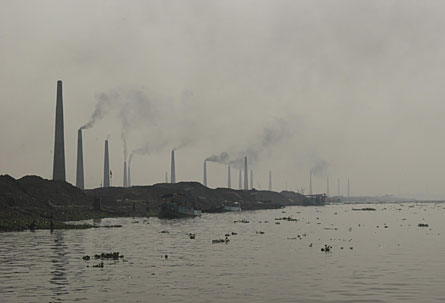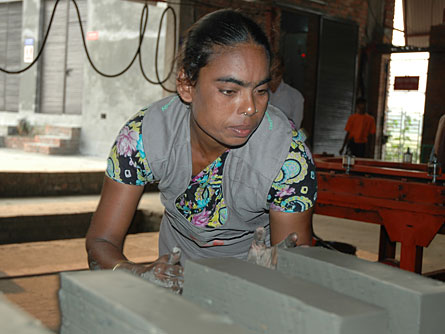Countering Copenhagen’s Carbon Footprint
The United Nations’ Climate Change Conference, beginning Monday (Dec. 7), will draw legions of people to Copenhagen from 192 countries. Traveling to Denmark sometimes from the far corners of the Earth — not to mention feeding attendees, accommodating them, networking them with each other and their offices back home, and more) — will expend huge amounts of energy. And spew plenty of the very carbon dioxide that the meeting negotiators are trying to rein in. So the Danish government launched a program aimed at offsetting the carbon footprint of this gathering — with bricks.
Or brick ovens, anyway.



The U.N. Framework Convention on Climate Change, or UNFCCC, has tentatively estimated that energy expenditures associated with the meeting will likely lead to emissions of around 40,000 tons of CO2.(or its equivalent). So the Danish Energy Agency and World Bank are working with a Bangladeshi investment bank (Industrial and Infrastructure Development Finance Company) to arrange financing for the replacement of 20 dirty and very energy-inefficient brick kiln units around the Bangladesh capital of Dhaka.
Only four of the new kilns are currently in place. “But when all 20 are up and running they’ll reduce an estimated 100,000 tons of CO2 annually,” says Christian van Maarschalkerweerd. He’s the chief program coordinator on climate and energy with the Danish Energy Agency in Copenhagen.
The carbon-offset kilns will bring a new technology to Bangladesh. Called hybrid Hoffman kilns, these brick-making facilities have been spreading throughout China for a decade. Like traditional Bangladeshi kilns, they heat with coal. But because each kiln uses only half as much fuel to operate, the new technology is much cleaner. “It reduces CO2 by around 50 percent — and the particulate matter emission is reduced even more,” Maarschalkerweerd says.
Those particulates are dust-sized motes of carbon and other materials that can be inhaled deeply into the lungs, contributing to respiratory, heart and other ails. And current brick-building operations at Bangladesh’s many thousands of kilns contribute substantial air pollution.
Brick making is one of the most polluting enterprises in this country. Typically a mom and pop enterprise, it is a leading source of greenhouse gases, spewing some 3 million tons into the atmosphere each year, according to the United Nations. And to keep costs low, some facilities burn more than dirty (high sulfur) coal — including used tires and wood.
Indeed, Maarschalkerweerd observes, “During the dry season, when all of the old kilns are operating, the air pollution in Dhaka is the world’s worst.”
So the new kilns will pay benefits not only for climate but also the health of people living in the vicinity of these new facilities.
And benefits don’t end there. Traditional Bangladeshi kilns are open topped and sit at ground level. Which means they are out of commission throughout the rainy season, perhaps half the year. The enclosed, elevated kilns to be installed as part of the Copenhagen carbon-offsets program will be able to operate year-round, Maarschalkerweerd says, providing steady employment.
The new-kiln program will also provide safety gear for workers (protections they’d not previously had), in addition to guaranteed visits every other month by doctors to check on worker health.
While the pilot scale introduction of this technology will only help a small fraction of Bangladeshi brick makers, “Our hope is, of course, that once we can show that it can be done, the technology will spread,” Maarschalkerweerd says.
According to the United Nations, each kiln system is about $550,000. Experience in China has indicated that the new kiln technology results in stronger, higher quality and lower-cost bricks. Indeed, payback of installing the new technology can be just three years for a facility with a projected lifetime of at least two decades.
The current global climate treaty, known as the Kyoto Protocol, allows developed nations and organizations to buy “credits” for pollution through a program known as the Clean Development Mechanism, or CDM. The credits come from financing pollution or energy-minimizing technologies in the developing world. The new Bangladeshi kilns are such a CDM program registered with the UNFCCC.
And how many bricks will the new units provide? When the remaining 16 units come are all on line over the next few years, the clean kilns will be churning out a million a day. That’s a lot of bricks.






